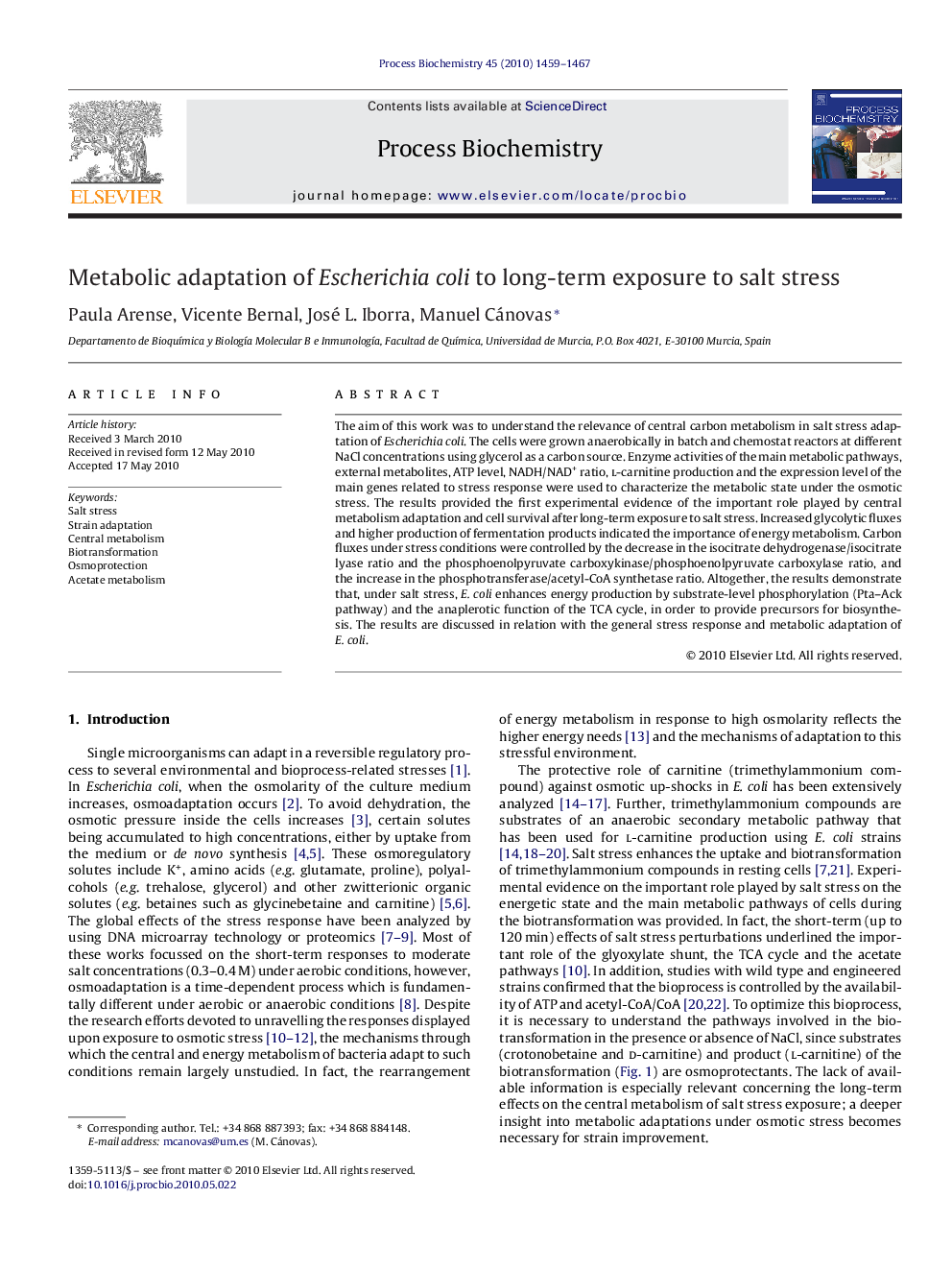| Article ID | Journal | Published Year | Pages | File Type |
|---|---|---|---|---|
| 34965 | Process Biochemistry | 2010 | 9 Pages |
The aim of this work was to understand the relevance of central carbon metabolism in salt stress adaptation of Escherichia coli. The cells were grown anaerobically in batch and chemostat reactors at different NaCl concentrations using glycerol as a carbon source. Enzyme activities of the main metabolic pathways, external metabolites, ATP level, NADH/NAD+ ratio, l-carnitine production and the expression level of the main genes related to stress response were used to characterize the metabolic state under the osmotic stress. The results provided the first experimental evidence of the important role played by central metabolism adaptation and cell survival after long-term exposure to salt stress. Increased glycolytic fluxes and higher production of fermentation products indicated the importance of energy metabolism. Carbon fluxes under stress conditions were controlled by the decrease in the isocitrate dehydrogenase/isocitrate lyase ratio and the phosphoenolpyruvate carboxykinase/phosphoenolpyruvate carboxylase ratio, and the increase in the phosphotransferase/acetyl-CoA synthetase ratio. Altogether, the results demonstrate that, under salt stress, E. coli enhances energy production by substrate-level phosphorylation (Pta–Ack pathway) and the anaplerotic function of the TCA cycle, in order to provide precursors for biosynthesis. The results are discussed in relation with the general stress response and metabolic adaptation of E. coli.
